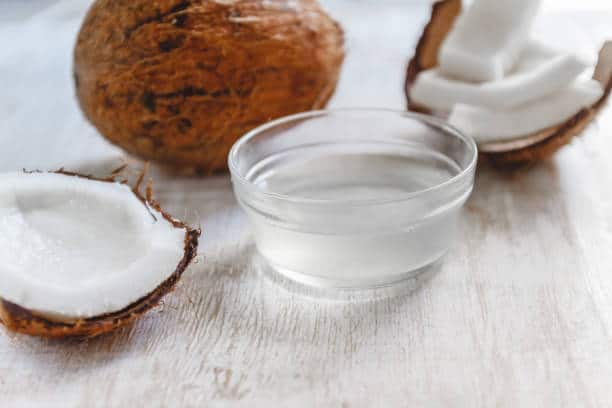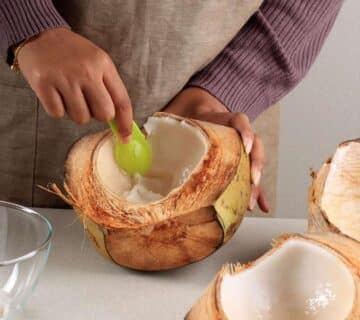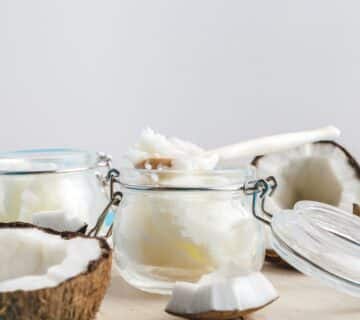Virgin coconut oil (VCO) is a versatile and highly sought-after product known for its myriad of benefits in various industries including beauty, food, skincare, and health. Made from fresh coconut meat, the process of extracting VCO involves several methods, each with its own set of advantages and disadvantages.
In this comprehensive guide, we will explore three popular methods for making virgin coconut oil, along with their pros and cons. Let’s check it out!
3 Methods on How To Make Virgin Coconut Oil
Making virgin coconut oil (VCO) involves several methods, each with its unique approach to extracting the oil from fresh coconut meat. Here, we’ll delve into three common methods and explain the steps involved in each process:
A. Wet Mill Method
The wet mill method is a traditional approach to extracting virgin coconut oil that emphasizes the natural separation of oil from coconut milk. This method retains the rich flavor and aroma of fresh coconuts. Below is a detailed explanation of how to make virgin coconut oil using the wet mill method:
1. Start by selecting fresh coconuts and breaking them open to remove the white meat inside. You can use a coconut grater or knife to extract the meat from the shell. The finer the texture, the easier it will be to extract the milk.
2. Place the grated coconut meat in a bowl and add warm water. Using your hands, squeeze and knead the coconut meat to extract the milk. You can also use a muslin cloth or fine sieve to strain the milk from the grated coconut.
3. Pour the extracted coconut milk into a clean container or bowl. Allow it to sit undisturbed for several hours or overnight. During this time, the oil will naturally separate from the water content and rise to the surface.
4. After the separation process, you will notice a creamy layer of coconut oil floating on top of the coconut milk. Use a spoon or ladle to carefully skim off the oil and transfer it to a separate container.
5. To ensure the purity of the virgin coconut oil, filter the extracted oil through a fine sieve, cheesecloth, or muslin cloth. This will help remove any remaining coconut particles or impurities.
6. Some people choose to gently heat the oil to remove excess moisture and enhance the flavor. If you’d love to do this, try heating the oil at low temperatures, being careful not to overheat and compromise its nutritional properties. But this last step is optional, so it all depends on people’s preference.
Pros of the Wet Mill Method
- Retains natural flavor and aroma which results in a rich and authentic coconut oil
- Preserves nutritional properties and antioxidants in virgin coconut oil
Cons of the Wet Mill Method
- Time-consuming process (requires several hours or overnight)
- Requires fresh coconuts
- May require specialized equipment like coconut graters or presses
B. Cold Process Method
The cold process method of making virgin coconut oil involves extracting oil from dried coconut meat without the application of heat. This method preserves the natural nutrients and antioxidants present in coconut oil. Here’s a detailed explanation of how to make virgin coconut oil using the cold process method:
1. Prepare the Coconuts by selecting mature coconuts and breaking them open to remove the white meat inside. Use a coconut grater or knife to extract the meat from the shell.
2. Cut the coconut meat into small pieces or shreds to facilitate the drying process. Then spread the coconut meat pieces evenly on trays or racks and place them in a well-ventilated area. You can also use a food dehydrator set to a low temperature. Allow the coconut meat to dry completely until it becomes crisp and brittle.
3. Once the coconut meat is dried, it is ready for cold pressing. Use a mechanical press or expeller to extract the oil from the dried coconut meat. Apply gentle pressure to squeeze out the oil without generating heat.
4. After extraction, the virgin coconut oil may contain small particles or impurities. Filter the oil through a fine sieve, cheesecloth, or muslin cloth to remove any remaining solids and ensure purity.
Pros of the Cold Process Method
- Preserves natural nutrients, antioxidants, and flavor of coconut oil since it does not involve high heat
- Ensures that the oil maintains its high-quality and freshness
- The oil extracted through the cold process method can be used for various culinary and cosmetic purposes due to its purity and integrity
Cons of the Cold Process Method
- Requires dried coconut meat
- May result in a lower oil yield compared to other methods that involve heat extraction
- Requires mechanical presses or expellers for cold pressing
3. Boiling the Coconut
Boiling the coconut method is a traditional approach to extracting virgin coconut oil that involves heating coconut milk to separate the oil from the water content. Though simple, this method requires attention to ensure proper extraction and purity. Here’s a detailed explanation of how to make virgin coconut oil using the boiling the coconut method:
1. Choose mature coconuts with firm shells and a rich, creamy interior. Crack open the coconuts and remove the white meat inside using a coconut grater or knife. Grate the coconut meat finely using a grater or food processor. The finer the texture, the easier it will be to extract the milk.
2. Place the grated coconut meat in a bowl and add warm water. Squeeze and knead the coconut meat to extract the milk. Strain the mixture through a muslin cloth or fine sieve to separate the milk from the solids.
3. Pour the extracted coconut milk into a pot or pan and heat it over medium heat. Allow the coconut milk to simmer gently, stirring occasionally to prevent burning.
4. As the coconut milk heats up, the water content will evaporate, and the oil will separate and rise to the surface. Once the oil begins to form a layer on top, reduce the heat and continue simmering until most of the water has evaporated.
5. Next, use a spoon or ladle to carefully skim off the oil that has risen to the surface of the coconut milk. Transfer the collected oil to a clean container.
6. To remove any remaining impurities, filter the extracted oil through a fine mesh sieve or cheesecloth. This will ensure the purity of the virgin coconut oil.
Pros of Boiling the Coconut Method
- Simple and straightforward process
- No specialized equipment required
- Quick extraction process
Cons of Boiling the Coconut Method
- The process of boiling the coconut milk exposes the oil to high heat, which may degrade some of its nutritional properties and flavor
- May alter the flavor profile of the virgin coconut oil, resulting in a slightly different taste compared to other methods
- May result in a lower yield of virgin coconut oil
Ready to Explore Virgin Coconut Oil?
Making virgin coconut oil involves several methods, each with its own unique characteristics and benefits. The numerous benefits of virgin coconut oil span across beauty, food, and health industries, making it a valuable addition to daily life.
If you are looking to explore the full potential of virgin coconut oil and other coconut derivatives, Sari Coconut stands out as a trusted supplier. As a certified supplier of coconut derivatives products from Indonesia, Sari Coconut offers not only high-quality virgin coconut oil but also an extensive range of products such as desiccated coconut, coconut charcoal briquette, coconut sugar, coconut fiber, and more.
With a commitment to excellence, Sari Coconut ensures that their products meet the highest standards, providing a natural and sustainable solution for various industries worldwide. Whether you are in the beauty, food, or health sector, Sari Coconut is your go-to source for premium coconut derivatives products shipped conveniently to your location!
FAQ
1. How is virgin coconut oil different from regular coconut oil?
Virgin coconut oil is made from fresh coconut meat using methods that do not involve high heat or chemical extraction. It retains more of the natural nutrients and antioxidants compared to refined coconut oil.
2. What equipment do I need to make virgin coconut oil at home?
The equipment needed depends on the method you choose. For the wet mill method, you may need a blender, cheesecloth or a fine mesh strainer, and containers for storage. For the cold process method, you’ll need a dehydrator or a way to dry the coconut meat, and a mechanical press or expeller for extraction. While for boiling the coconut method, basic kitchen utensils like pots, pans, and strainers will suffice.
3. Can I use any type of coconut to make virgin coconut oil?
Ideally, fresh coconuts should be used to make virgin coconut oil for the best flavor and quality. However, some methods may work with dried coconut meat as well.
4. How long does it take to make virgin coconut oil?
The time required varies depending on the method used and the quantity of coconut meat. Generally, the wet mill method may take 1-2 days, the cold process method may take a few hours to dry the coconut meat and extract the oil, while boiling the coconut method can be done in a relatively shorter time.






